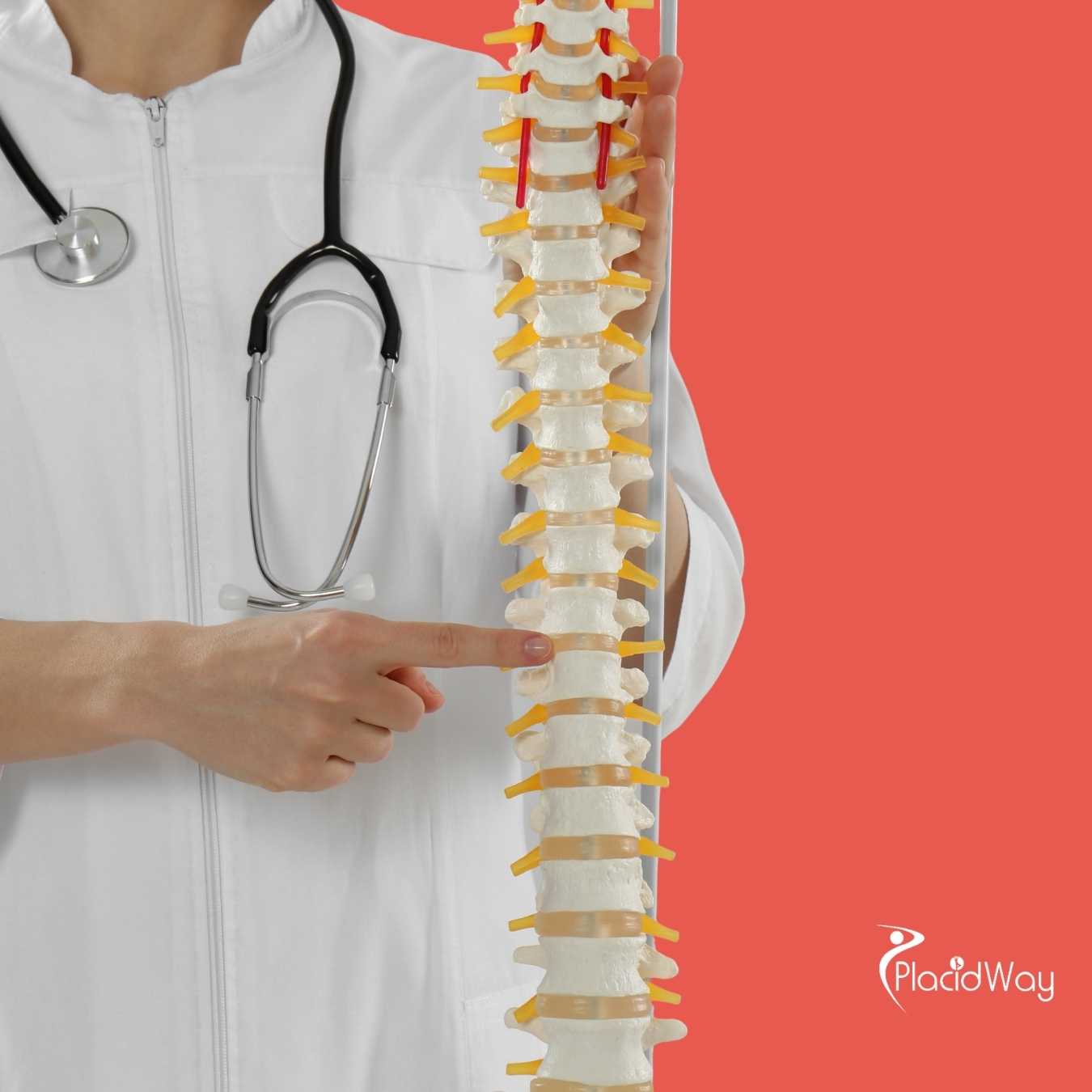Meniscus Tear Healing: What to Expect from Recovery
.png)
When you experience a knee injury, especially one involving a meniscus tear, a common and pressing question often arises: "Can I truly recover 100% from this?" It's a valid concern, as the meniscus plays a crucial role in knee stability, shock absorption, and smooth joint movement. The journey to recovery can seem daunting, filled with questions about treatment options, rehabilitation, and the potential for long-term impact on your active lifestyle. Understanding what a meniscus tear entails and the various paths to healing is the first step toward regaining your knee health.
The good news is that for many people, a full and complete recovery from a meniscus tear is not just a hope, but a realistic outcome. However, what "100% recovery" means can vary for each individual. For some, it's returning to high-impact sports; for others, it's living pain-free and enjoying daily activities without limitation. This guide will explore the nuances of meniscus tear recovery, breaking down the factors that influence healing, the available treatment approaches, and what you can realistically expect on your path to regaining full knee function and strength.
Is 100% recovery from a meniscus tear truly possible?
Achieving a full recovery from a meniscus tear is a common goal for patients, and it's frequently realized. The human body has an incredible capacity for healing, and modern medical advancements provide several effective treatment pathways. However, the definition of "100%" can be subjective. For athletes, it might mean returning to competitive play without performance compromise. For others, it’s about performing daily tasks, walking, and enjoying hobbies free of pain and instability. The key lies in understanding that while the tissue might not regenerate identically, the functional outcome can be indistinguishable from the knee's state before the injury.
Factors like the patient's age, overall health, the specific type and location of the tear, and commitment to rehabilitation significantly influence the recovery process. A minor tear might heal with conservative management, while a more complex one may require surgery. Regardless of the approach, a structured and consistent rehabilitation program is paramount to restoring strength, flexibility, and stability to the knee joint. This dedicated effort ensures that the knee can withstand the demands of everyday life and desired activities without recurring issues, ultimately leading to a successful and complete return to function.
What factors influence the chances of a full meniscus tear recovery?
Several critical factors play a role in determining the likelihood and completeness of meniscus tear recovery. Firstly, the characteristics of the tear itself are paramount. Radial tears, bucket-handle tears, or degenerative tears each present different challenges and healing potentials. Tears located in the "red zone" (the outer, blood-rich part of the meniscus) generally have a better chance of healing due to better blood supply compared to tears in the "white zone" (the inner, avascular part). The size of the tear also matters, with smaller tears typically recovering faster and more completely than larger, more complex ones.
Secondly, individual patient factors such as age, overall health, and activity level significantly impact recovery. Younger patients with good blood supply and no underlying knee issues tend to heal more effectively. A patient's commitment to following post-treatment instructions, including rest, activity modification, and especially consistent physical therapy, is crucial. The chosen treatment method—whether conservative management or surgical repair—also dictates the recovery trajectory. Ultimately, a combination of these factors dictates the success and timeline of achieving a full meniscus tear recovery.
What are the main treatment options for a torn meniscus?
When faced with a torn meniscus, there are generally two broad categories of treatment options: conservative management and surgical intervention. The decision between these two paths is based on several factors, including the type, size, and location of the tear, the patient's age, activity level, and overall knee health. Your doctor will assess these elements to recommend the most suitable course of action to promote effective meniscus tear recovery.
Conservative management is often the first approach for smaller, stable tears, particularly those in the outer, well-vascularized "red zone" of the meniscus. This typically involves:
- Rest: Avoiding activities that aggravate the knee pain.
- Ice: Applying ice packs to reduce swelling and pain.
- Compression: Using bandages or sleeves to control swelling.
- Elevation: Keeping the leg raised to minimize fluid accumulation.
- Physical Therapy: Strengthening surrounding muscles and improving knee mobility.
- Pain Medication: Over-the-counter anti-inflammatory drugs to manage discomfort.
Surgical intervention is considered for larger, unstable tears, tears in the "white zone" that lack blood supply, or when conservative treatment fails to provide relief. The most common surgical procedures are:
- Meniscus Repair: The surgeon stitches the torn pieces of the meniscus back together. This is ideal for tears in the red zone with good healing potential.
- Partial Meniscectomy (Meniscus Trimming): If the tear is not repairable, the damaged portion of the meniscus is carefully trimmed away to smooth the edges and relieve symptoms. This is often performed for degenerative tears or complex tears in the white zone.
Both procedures are usually performed arthroscopically, using small incisions and a camera, which generally leads to quicker recovery times compared to traditional open surgery.
How long does it take to recover after meniscus surgery?
The recovery timeline after meniscus surgery can vary significantly based on the specific surgical procedure performed and the individual's healing capacity. Generally, a partial meniscectomy (where a portion of the meniscus is removed) has a shorter recovery period than a meniscus repair (where the torn pieces are stitched back together). This is because a repair requires more time for the tissue to heal itself.
For a partial meniscectomy, many patients can expect to return to light activities within 2-4 weeks and full activity, including some sports, within 4-6 weeks to 3 months. Weight-bearing is usually allowed quickly, often immediately, with a focus on restoring range of motion and strength through physical therapy. The goal is to get the knee moving and functional as soon as safely possible to prevent stiffness.
A meniscus repair, being a more involved procedure aimed at preserving the meniscus, demands a longer and more cautious recovery. Patients typically use crutches and have restricted weight-bearing for 4-6 weeks to protect the repair site. Full recovery, allowing a return to sports or strenuous activities, can take 4 to 6 months, or even longer. This extended period is crucial for the repaired tissue to fully heal and regain strength. Strict adherence to the physical therapy program is essential to achieve optimal results and a successful meniscus tear recovery without re-injury.
What is the role of physical therapy in meniscus tear rehabilitation?
Physical therapy (PT) is an indispensable component of successful meniscus tear recovery, regardless of whether the tear is treated conservatively or surgically. Its primary goal is to systematically guide the knee back to its full strength, mobility, and stability, minimizing the risk of re-injury. A well-structured PT program is tailored to the individual's specific tear, treatment, and recovery phase, ensuring a progressive and safe return to activity.
For conservative management, PT focuses on reducing pain and swelling, gradually increasing range of motion, and strengthening the muscles surrounding the knee (quadriceps, hamstrings, and calf muscles) to provide better support and stability. This helps to offload stress on the injured meniscus and improve overall knee mechanics.
Following surgery (meniscectomy or repair), PT guides the patient through different stages of healing. Initially, the focus is on pain management, protecting the surgical site, and gentle range-of-motion exercises. As healing progresses, the program advances to include:
- Strengthening exercises: To rebuild muscle mass and power.
- Flexibility exercises: To restore full knee movement.
- Proprioception and balance training: To improve joint awareness and stability.
- Functional training: To prepare the knee for daily activities and sports-specific movements.
Consistent attendance and adherence to the exercises prescribed by a physical therapist are critical for achieving optimal long-term outcomes and a complete meniscus tear recovery.
Can a meniscus tear heal on its own without surgery?
It is a common misconception that all meniscus tears require surgery. In reality, the potential for a meniscus tear to heal on its own largely depends on its location and type. The meniscus has a limited blood supply, which is critical for healing. The outer one-third of the meniscus, often referred to as the "red zone," has a relatively good blood supply. Tears in this region, especially smaller, stable ones, have a higher chance of healing naturally with conservative management.
Conversely, tears in the inner two-thirds of the meniscus, known as the "white zone," have little to no blood supply. These tears are less likely to heal on their own and often require surgical intervention if they cause persistent symptoms or mechanical issues within the knee. Degenerative tears, common in older individuals, are also less prone to natural healing.
For tears with healing potential, conservative management involving rest, ice, compression, elevation (RICE), non-steroidal anti-inflammatory drugs (NSAIDs), and a structured physical therapy program can be highly effective. The goal is to allow the tear to mend while strengthening the surrounding muscles to support the knee. Regular medical follow-ups are important to monitor progress and ensure effective meniscus tear recovery.
What are the potential long-term implications of a meniscus tear?
While many individuals achieve excellent meniscus tear recovery, it's important to be aware of potential long-term implications. The meniscus serves as a vital shock absorber and stabilizer in the knee. Even after a successful repair or partial removal, the knee's biomechanics can be subtly altered, which may have consequences over many years.
One of the most significant long-term concerns is the increased risk of developing knee osteoarthritis. When the meniscus is damaged or partially removed, the cartilage in the knee joint may experience greater stress, potentially leading to its premature wear and tear. Studies show that patients who undergo meniscectomy (removal of meniscus tissue) have a higher incidence of arthritis development compared to those whose meniscus is repaired or who manage tears conservatively.
Other potential long-term issues can include chronic or intermittent knee pain, stiffness, or a feeling of instability, especially during high-impact activities. The risk of re-injury also remains, particularly if the knee is not adequately strengthened through ongoing exercises. Therefore, even after initial recovery, maintaining good knee health through strength training, flexibility, and avoiding excessive stress is crucial for preventing future problems and preserving the benefits of your meniscus tear recovery.
How can medical tourism help with meniscus tear treatment?
For individuals seeking specialized care for a meniscus tear, medical tourism presents an increasingly viable and attractive option. Many patients explore treatment abroad due to various factors, including the desire for more affordable procedures, shorter waiting lists, access to specific specialists or advanced techniques not readily available locally, or simply a wish for a more personalized healthcare experience. International medical centers in countries like Turkey, India, and Mexico have developed strong reputations for orthopedic surgery, including intricate knee procedures like meniscus repair.
The advantages of opting for medical tourism for meniscus tear treatment are multifaceted. Patients can often benefit from cutting-edge diagnostic equipment and surgical technologies, sometimes unavailable in their home countries or offered at a premium price. Additionally, the concentrated focus on specific procedures in high-volume clinics abroad often translates to a high level of surgeon expertise and potentially better outcomes. The comprehensive care packages frequently offered by these facilities can also simplify the patient journey, covering everything from initial consultation to post-operative follow-up and even accommodation.
Choosing medical tourism allows patients to proactively manage their health, find solutions that align with their budget and timeline, and potentially accelerate their path to meniscus tear recovery. It’s an option that empowers individuals to take control of their healthcare decisions and seek the best possible treatment worldwide.
What are the cost considerations for meniscus surgery in popular medical tourism destinations?
One of the primary drivers for considering medical tourism for meniscus surgery is the substantial cost savings it can offer. The price of orthopedic procedures, including arthroscopic meniscus repair or meniscectomy, can vary dramatically between countries. In many Western nations, the cost can be prohibitive, especially for those without adequate insurance coverage or facing high deductibles.
In popular medical tourism destinations such as Turkey, India, Mexico, and Thailand, the same high-quality procedures are often available at a fraction of the cost. For instance, a meniscus surgery that might cost upwards of $10,000-$20,000 or more in the United States or Canada could be available for $3,000-$8,000 in these international hubs. This price typically includes the surgical fee, anesthesia, hospital stay, and initial post-operative follow-ups, making it an attractive option for budget-conscious patients.
It is important to obtain detailed quotes from clinics that clearly outline all inclusions and exclusions. While the primary medical costs are lower, patients should also factor in travel expenses, accommodation, and potential costs for extended recovery or follow-up physical therapy abroad, if desired. Despite these additional considerations, the overall expense for a complete meniscus tear recovery through medical tourism often remains significantly more affordable, making world-class care accessible to a broader population.
Are international clinics for meniscus repair reliable and high-quality?
The perception of reliability and quality in international clinics is a critical consideration for anyone exploring medical tourism for meniscus tear treatment. It is a misconception that lower costs equate to lower quality. In fact, many medical tourism destinations have invested heavily in their healthcare infrastructure, leading to the development of world-class facilities. These hospitals and clinics are often equipped with the latest medical technology, matching or even exceeding the standards found in developed Western countries.
Furthermore, the orthopedic surgeons performing meniscus repair in these international centers are frequently highly qualified, with many having received training and certification from renowned institutions in Europe and North America. They often specialize in specific procedures, accumulating extensive experience due to the high volume of cases they handle. Many international clinics also hold prestigious international accreditations, such as those from the Joint Commission International (JCI), which signify adherence to stringent global benchmarks for patient safety and quality of care.
When considering an international clinic for your meniscus tear recovery, it is always advisable to research their accreditations, read patient testimonials, inquire about the surgeon's qualifications and experience, and seek transparent information about success rates and post-operative care. Reputable medical tourism facilitators, like PlacidWay, can assist in vetting these clinics, ensuring that you receive reliable and high-quality care that supports a successful recovery.
When can I return to sports after a meniscus tear?
The desire to return to sports and high-impact activities is a common motivation for many patients undergoing meniscus tear recovery. However, rushing back too soon can lead to re-injury or long-term complications. The timeline for returning to sports depends significantly on the type of tear, the treatment received, and the individual's commitment to rehabilitation.
Following a partial meniscectomy, where only the damaged portion of the meniscus is removed, athletes often return to light, low-impact activities within 6-8 weeks. A full return to competitive sports, including those requiring pivoting, jumping, or sudden changes in direction, can typically occur within 2 to 3 months. This relatively quicker timeline is because there is no tissue healing required at the repair site.
For those who undergo a meniscus repair, the recovery period is considerably longer to allow the stitched tissue to heal properly. Return to sports for these patients is usually delayed until 4 to 6 months post-surgery, sometimes even longer, depending on the tear's complexity and the surgeon's protocol. It’s crucial that the athlete meets specific criteria, including full range of motion, comparable strength in both legs, absence of pain and swelling, and completion of sport-specific training with a physical therapist. Medical clearance from the orthopedic surgeon is absolutely essential before resuming any high-level sports activities to ensure a safe and lasting meniscus tear recovery.
Explore Your Healthcare Options with PlacidWay
Navigating healthcare decisions, especially for specialized procedures like meniscus tear treatment, can be complex. If you're considering medical options both locally and abroad, PlacidWay is here to help. We connect you with world-class hospitals and clinics offering a wide range of healthcare services, including orthopedic surgery and rehabilitation, to ensure you find the best solution for your needs and achieve optimal recovery.


.png)









Share this listing